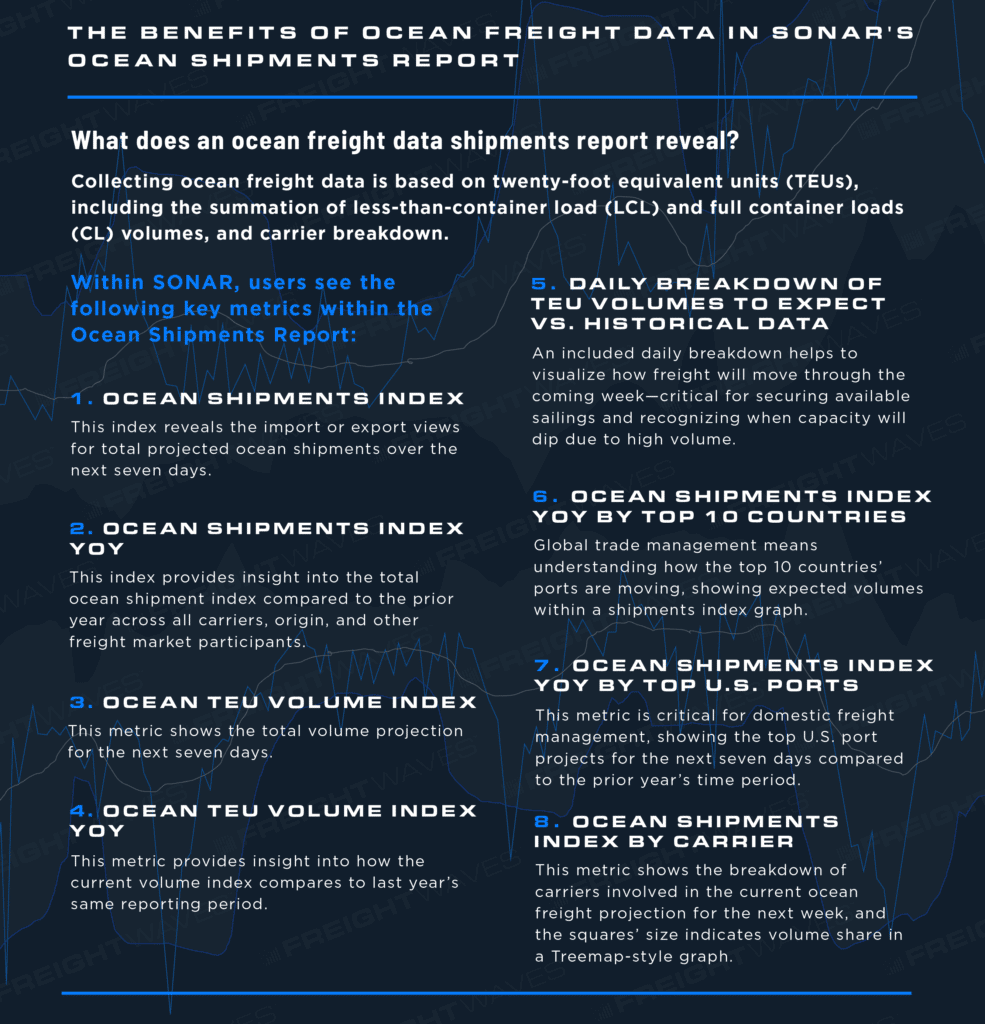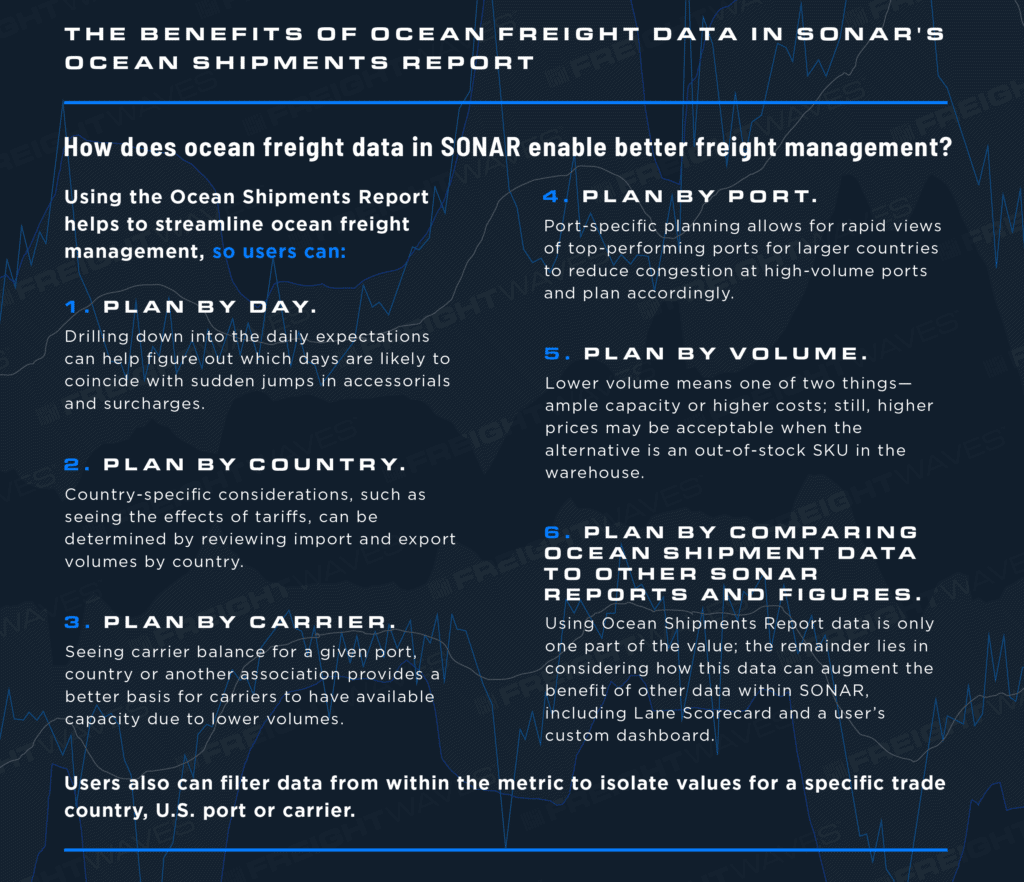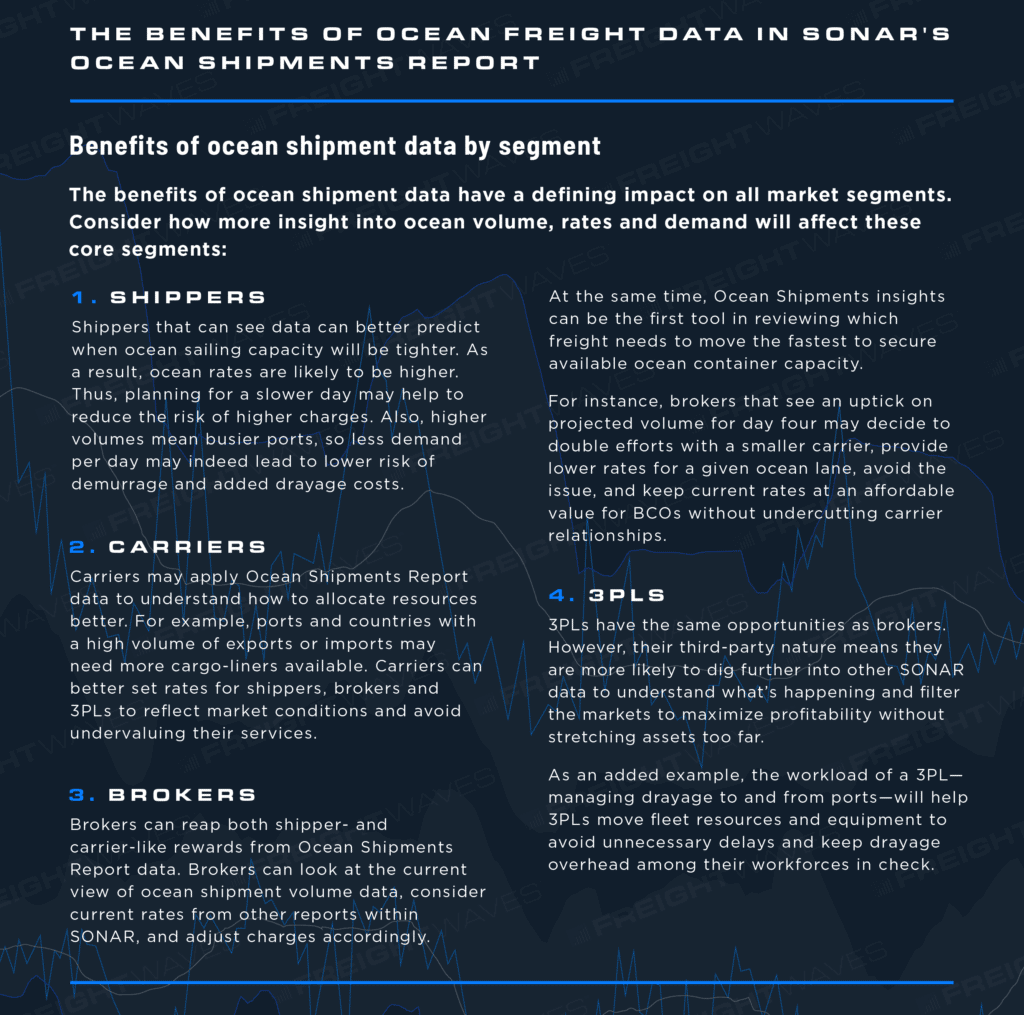Widespread uncertainty continues to define global trade. Shippers, carriers, brokers and third-party logistics providers (3PLs) need to understand how current market conditions influence ocean rates, sailings and capacity. Failure to plan for ocean freight will inevitably lead to problems managing and securing freight, resulting in massive inventory problems ahead of peak season. With that in mind, a comprehensive Ocean Shipments Report, available in FreightWaves SONAR, can provide better ocean freight understanding and management.

Collecting ocean freight data is based on twenty-foot equivalent units (TEUs), including the summation of less-than-container load (LCL) and full container loads (CL) volumes, and carrier breakdown. Within SONAR, users see the following key metrics within the Ocean Shipments Report:

Using the Ocean Shipments Report helps to streamline ocean freight management, so users can:
Users also can filter data from within the metric to isolate values for a specific trade country, U.S. port or carrier.

The benefits of ocean shipment data have a defining impact on all market segments. Consider how more insight into ocean volume, rates and demand will affect these core segments:
Shippers that can see data can better predict when ocean sailing capacity will be tighter. As a result, ocean rates are likely to be higher. Thus, planning for a slower day may help to reduce the risk of higher charges. Also, higher volumes mean busier ports, so less demand per day may indeed lead to lower risk of demurrage and added drayage costs.
Carriers may apply Ocean Shipments Report data to understand how to allocate resources better. For example, ports and countries with a high volume of exports or imports may need more cargo-liners available. Carriers can better set rates for shippers, brokers and 3PLs to reflect market conditions and avoid undervaluing their services.
Brokers can reap both shipper- and carrier-like rewards from Ocean Shipments Report data. Brokers can look at the current view of ocean shipment volume data, consider current rates from other reports within SONAR, and adjust charges accordingly. At the same time, Ocean Shipments insights can be the first tool in reviewing which freight needs to move the fastest to secure available ocean container capacity.
For instance, brokers that see an uptick on projected volume for day four may decide to double efforts with a smaller carrier, provide lower rates for a given ocean lane, avoid the issue, and keep current rates at an affordable value for BCOs without undercutting carrier relationships.
3PLs have the same opportunities as brokers. However, their third-party nature means they are more likely to dig further into other SONAR data to understand what’s happening and filter the markets to maximize profitability without stretching assets too far.
As an added example, the workload of a 3PL – managing drayage to and from ports – will help 3PLs move fleet resources and equipment to avoid unnecessary delays and keep drayage overhead among their workforces in check.

